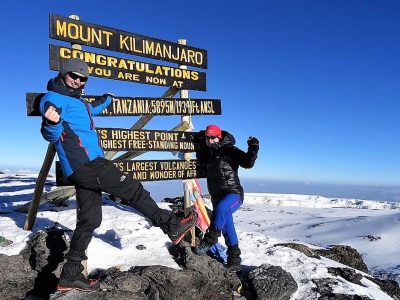There are seven official trekking routes by which to ascend and descend Mount Kilimanjaro: Lemosho, Machame, Marangu, Mweka, Rongai, Shira, and Umbwe. Of all the routes, Machame is considered the most scenic, albeit steeper, route. It can be done in six or seven days. The Rongai is the easiest and least scenic of all camping routes. The Marangu is also relatively easy, but this route tends to be very busy, the ascent and descent routes are the same, and accommodation is in shared huts with all other climbers.
People who wish to trek to the summit of Kilimanjaro are advised to undertake appropriate research and ensure that they are both properly equipped and physically capable. Though the climb is technically not as challenging as when climbing the high peaks of the Himalayas or Andes, the high elevation, low temperature, and occasional high winds make this a difficult and dangerous trek. Acclimatisation is essential, and even the most experienced trekkers suffer some degree of altitude sickness.
Animal life
Large animals are rare on Kilimanjaro and are more frequent in the forests and lower parts of the mountain. Elephants and Cape buffaloes are among the animals that can be potentially hazardous to trekkers. Bushbucks, chameleons, dik-diks, duikers, mongooses, sunbirds, and warthogs have been reported as well. Zebras and hyenas have sporadically been observed on the Shira plateau.

